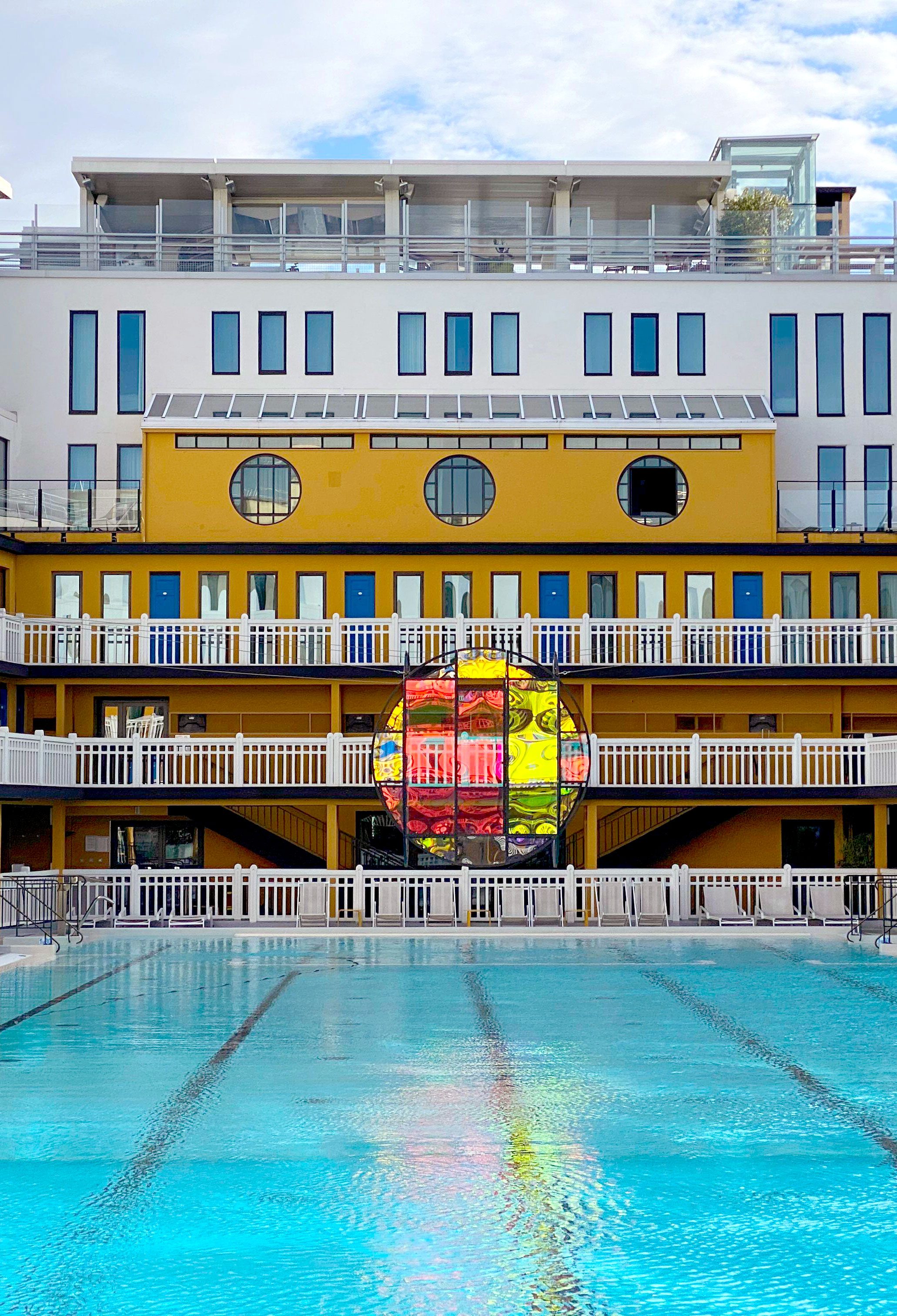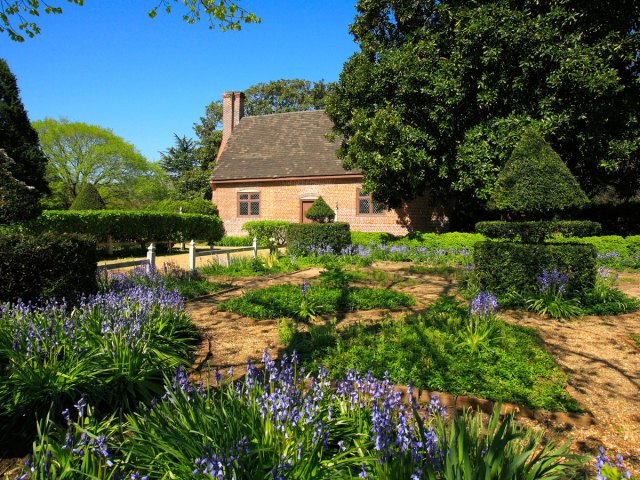There’s a reason Paris is called the “City of Light” — and not just because of the Eiffel Tower’s sparkling light show every evening. One of the world’s most-visited cities, the French capital dazzles visitors with world-famous restaurants, art galleries and museums, chic boutiques, and landmarks to fill weeks worth of vacation time. After you’ve checked off the big hitters — Notre-Dame, the Eiffel Tower, the Louvre, Sacré-Coeur — you may be wondering where to head next. Here are nine under-the-radar landmarks to check out on your next Parisian adventure.
Louis Vuitton Foundation

With a striking modern, abstract exterior covered in giant panels of smooth glass, the Louis Vuitton Foundation — designed by famed architect Frank Gehry — is impossible to miss. Since the art museum and cultural center opened in 2014, the foundation has housed a permanent collection of 268 pieces from 102 artists, in addition to two temporary displays of modern art, which rotate annually. The minimalist interior includes exhibits on pop art, expressionist art, and music and sound, displaying works from both the 20th and 21st centuries. Don’t forget to visit the auditorium, designed to showcase live artistic performance, such as dance and music. Lovers of the arts will fall hard for the whole experience.
Palais Garnier

Even if you’re not into opera, visiting the Opéra National de Paris, also known as Palais Garnier, will feel like stepping into a fairy tale. The magnificent building in the ninth arrondissement was constructed between 1861 and 1875 under the orders of Emperor Napoleon III to host the Paris Opera. The 98-foot-tall vault constructed of swirled marble and double staircases impresses from the moment you step inside. The horseshoe-shaped auditorium embellished in marble, stucco, and velvet includes an eight-ton bronze and crystal chandelier that hangs prominently. Attend an opera, ballet, or symphonic concert to fully experience this magnificent space. Currently, the venue produces 380 shows a year to over 800,000 audience members. Experiencing a Parisian opera is one way to feel a true connection with the city.
The Molitor
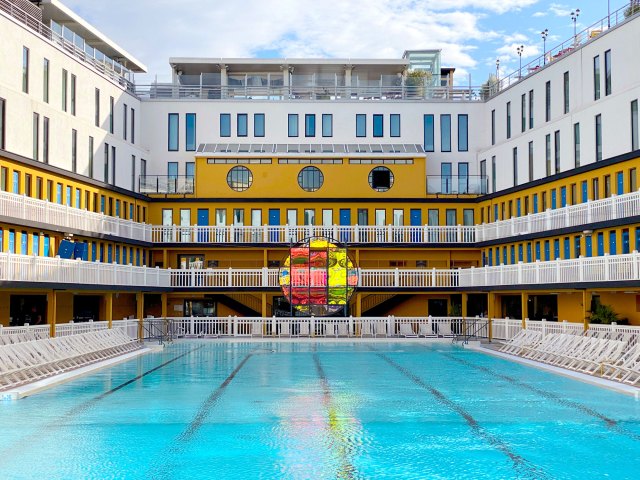
Not only is the Molitor a historical monument, but it’s also a modern-day pool, spa, hotel, bar, rooftop space, art gallery, and restaurant rolled into one. A symbol of Parisian luxury, this urban resort opened in 1929 and for six decades was the place locals came to swim, sunbathe, play sports, and socialize. When it closed in 1989, the artistically-minded patrons who frequented the Molitor occupied the abandoned building and turned it into a hub for creativity and expression.
During the 1990s, the building was covered in colorful graffiti and hosted parties, events, fashion shows, and concerts. Fast-forward to present-day, and the city has revamped the Molitor. However, the building’s history has not been erased — the city’s first street art graffiti has been preserved on the hotel’s lobby walls and corridors. The restaurant and spa are open to the public, and the Molitor hosts numerous cultural and sporting events. The building holds many of Paris’ decade-old secrets for those who want to dig beneath the surface.
The Statues of Liberty
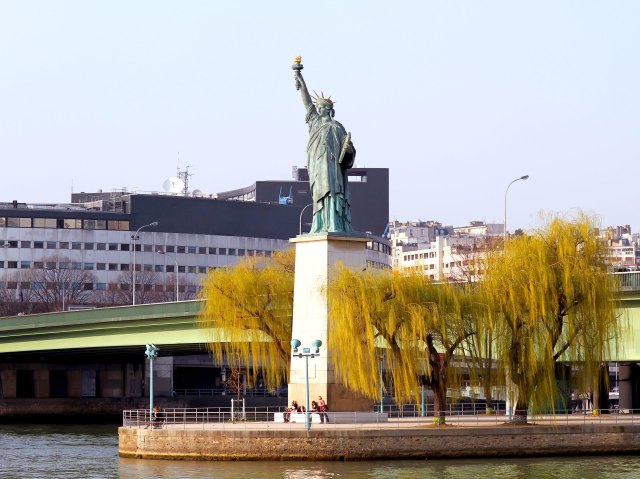
If you thought that the Statue of Liberty was in New York, you’d only be partly right. Scattered across Paris are a number of replicas of the famous statue, which the French gifted to the United States to commemorate the alliance of the two nations during the Revolutionary War. The most prominent (and largest) statue stands on a plinth on the Île aux Cygnes beside the Pont de Grenelle (Grenelle Bridge). It’s a quarter of the scale of its North American counterpart, and was gifted to Paris in 1889 by its American expat community.
The Musée d’Orsay’s Lady Liberty greets visitors as they arrive. Standing a little under 10 feet tall, the piece is also the work of acclaimed French sculptor Auguste Bartholdi. Until 2011, it stood in the Jardin du Luxembourg (Luxembourg Gardens), where another — a bronze copy — replaced it a year later. And there’s more: The bronze Lady Liberty, which until recently graced the courtyard at the Musée des Arts et Métiers, is on loan to the U.S. for a decade, but the museum retains the original plaster casts that were used to create the original.
Cimetière des Chiens

Animal lovers, be prepared to shed a tear or two as you visit this suburban pet cemetery in the Asnières-sur-Seine neighborhood. Its full name is Le Cimetière des Chiens et Autres Animaux Domestiques — the cemetery for dogs and other pets. In a tranquil spot beside the river, you’ll find the graves of much-loved canines and feline family members, famous animal actors, and heroes, including the grave of Rin Tin Tin, a German shepherd that starred in his own children’s television series. Rescued as a puppy from a World War I battlefield, Rin Tin Tin went on to star in 27 Hollywood movies before his death in Los Angeles in 1932. Also look out for the monument to a Saint Bernard named Barry. A poignant inscription reveals that he saved 40 human lives before making the ultimate sacrifice while trying to rescue the 41st. Actually, the legend isn’t true, though the sentiment is admirable — this canine hero died in old age after living out his retirement in a Swiss monastery.
Rue Dénoyez
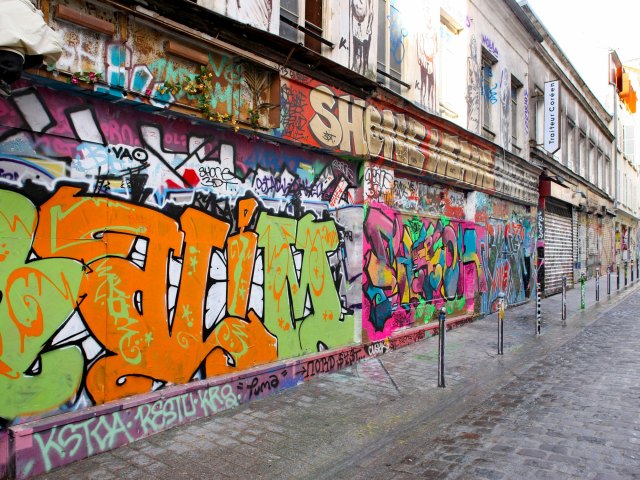
Dubbed “Street Art Alley,” this quirky Parisian street is one of the city’s most colorful corners. In many parts of the capital, daubing the walls is not permitted, but this lane is a rare exception. Street artists capitalize on this and have created a vivid and multi-faceted mural composed of the work by some of the city’s best graffiti artists married with the creative use of mosaics and household objects like teapots and toys. The art is organic and haphazard, but the end result is one of delightful whimsy, guaranteed to put a smile on your face.
Pâtisserie Stohrer

Nicolas Stohrer, pastry chef to King Louis XV, opened this historic patisserie almost 300 years ago in 1730. Pâtisserie Stohrer is the oldest bakery in the city and has an enviable reputation for baking what many consider to be the best vol-au-vents (hollow puff pastries) in Paris. When the monarch’s fussy father-in-law complained his brioche was too dry, Stohrer soaked it in wine. Later switching to hard liquor, the rum baba was born. Stohrer’s culinary inventions didn’t stop there — he was also responsible for creating the crème chiboust (a famous cream tart filled with Italian meringue), the puits d’amour (a hollow pastry filled with red currant or raspberry jam), and the traditional-style religieuse (two buns filled with cream and topped with chocolate ganache). Unsurprisingly, discerning foodies with an insatiable sweet tooth have been coming to this spot on Rue Montorgueil ever since.
Pagoda Paris
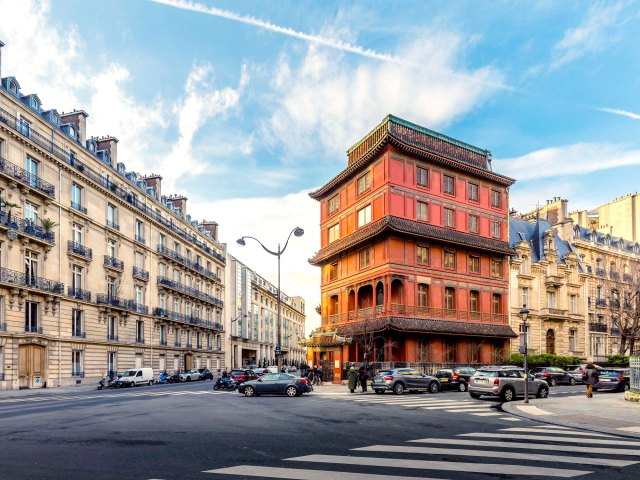
The Pagoda Paris started out as a “hôtel particulier,” a term which distinguished the building as a grand private residence. An art and antique dealer named Ching Tsai Loo bought the place in 1925 and set about transforming the building into a gallery that would match the splendor of the pieces he intended to display. From the red walls and tiered exterior to the lavish Shanxi lacquer panels that adorn the interior rooms, the modern-day art gallery is a triumph of Chinese architecture. For a time after Loo’s death in 1957, the building was neglected, but today, it remains fully restored. The pagoda is also a breathtaking event venue that frequently hosts cocktail receptions, private dinners, conferences, photo shoots and fashion shows.
Centre Pompidou

The futuristic design of the Centre Pompidou made it one of the most controversial buildings in Paris when it opened in 1977. Architects Richard Rogers and Renzo Piano designed this landmark. In fact, locals refer to it as the Beaubourg after its location, rather than calling it the Pompidou Center. Hidden behind the façade of this cultural hub is a public library and the Musée d’Art Moderne de Paris, where you’ll find works by the likes of Picasso, Matisse, Warhol, and Kapoor. But no matter what’s on display inside, it’s always the exterior systems that steal the show. Anything functional is color-coded: green for plumbing, blue for climate control, yellow for electrical, and red for anything involving safety or movement, such as the diagonal escalator which Parisians affectionately dub the “Caterpillar.”
More from our network
Daily Passport is part of Optimism, which publishes content that uplifts, informs, and inspires.






